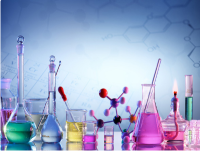The folding of a protein to its final native state involves a series of complex steps of intra- and intermolecular interactions between the nascent polypeptide chain, its solvent environment, and the quality control machinery of the cell (
1
). These steps are often halting, as the unfolded protein visits a series of intermediates states en route to its final native structure. In the cell, undesirable reactions such as aggregation and proteolytic degradation compete for these folding intermediates, shuffling them off the productive folding pathway (
see
Fig. 1 ). Thus, in order to properly fold, many proteins require the oversight of molecular chaperones that bias intermediates towards productive folding rather than off-pathway self-associations (
2
). Changes in this delicate balance between on- and off-pathway reactions have ramifications both for human health and the study of proteins of structural interest or of commercial utility.
Fig. 1.
Schematic of the in vivo protein folding process. Protein folding is depicted as a pathway along which the nascent, unfolded protein (U) moves through a series of requisite intermediate states (I) in order to reach the final, folded native state (F). This process is driven by the difference in thermodynamic stability between the unfolded and folded protein; the final yield of folded protein, however, will be determined by a variety of other factors as well as the native state stability. Chemical insolubility of the native state and misfolded species generated along the folding pathway lead to aggregation and reduction in the yield of soluble, folded protein. The quality control machinery of the cell also affects the yield of folded protein. The proteolytic machinery reduces this yield through degradation of intermediates; molecular chaperones may act to facilitate either this degradation or productive folding by preventing off-pathway aggression.






